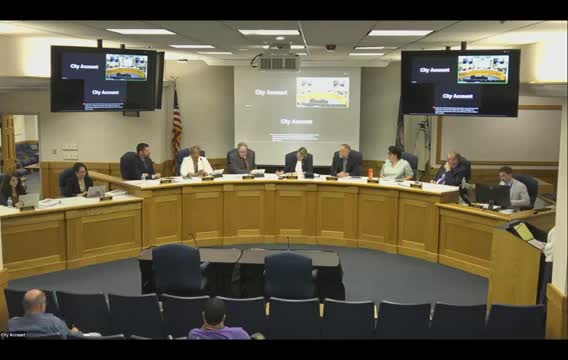Staunton City Council approves $163M FY2026 budget amid tax rate debates
April 27, 2025 | Staunton City, Virginia
This article was created by AI summarizing key points discussed. AI makes mistakes, so for full details and context, please refer to the video of the full meeting. Please report any errors so we can fix them. Report an error »

In the heart of Staunton City Hall, council members gathered on April 24, 2025, to deliberate on the city’s fiscal future, a meeting marked by passionate discussions and differing opinions on tax rates and budget allocations. The atmosphere was charged as the council faced the pressing need to balance infrastructure funding with the financial burdens on residents.
The primary focus of the meeting was a proposed ordinance to set the real estate tax rate at 90 cents per $100 of assessed value, a reduction from the previous rate. Councilor Oberholtzer, who introduced the motion, emphasized that this change would lower projected revenues by approximately $300,000, impacting the city’s ability to fund critical infrastructure projects. Despite the proposed reduction, he assured that essential services, including funding for Staunton City Schools, would remain intact.
As discussions unfolded, council members expressed their concerns about the long-term implications of underfunding infrastructure. Councilor Woods highlighted the importance of maintaining a balance between affordability for residents and the necessity of addressing the city’s growing infrastructure needs. “We are still affordable compared to many neighboring cities,” she noted, referencing the higher tax rates in places like Roanoke.
The debate intensified as members weighed the immediate financial relief for residents against the potential risks of deferring infrastructure investments. Some councilors argued that a modest increase in the tax rate would provide a more sustainable solution to the city’s pressing needs. “Putting off these decisions only leads to greater costs down the road,” one member remarked, drawing parallels to household budgeting.
Ultimately, the motion to adopt the lower tax rate failed, leading to a revised proposal that maintained the original budget of approximately $164 million for fiscal year 2026. This budget included necessary allocations for infrastructure improvements and essential city services, reflecting a commitment to the city’s future despite the challenges posed by rising assessments and economic uncertainties.
As the meeting concluded, the council recognized the complexity of the decisions ahead, with many members acknowledging the need for ongoing dialogue with residents about the city’s financial strategies. The discussions underscored a shared goal: to ensure that Staunton remains a vibrant and sustainable community for all its residents, even as they navigate the delicate balance of fiscal responsibility and community needs.
The primary focus of the meeting was a proposed ordinance to set the real estate tax rate at 90 cents per $100 of assessed value, a reduction from the previous rate. Councilor Oberholtzer, who introduced the motion, emphasized that this change would lower projected revenues by approximately $300,000, impacting the city’s ability to fund critical infrastructure projects. Despite the proposed reduction, he assured that essential services, including funding for Staunton City Schools, would remain intact.
As discussions unfolded, council members expressed their concerns about the long-term implications of underfunding infrastructure. Councilor Woods highlighted the importance of maintaining a balance between affordability for residents and the necessity of addressing the city’s growing infrastructure needs. “We are still affordable compared to many neighboring cities,” she noted, referencing the higher tax rates in places like Roanoke.
The debate intensified as members weighed the immediate financial relief for residents against the potential risks of deferring infrastructure investments. Some councilors argued that a modest increase in the tax rate would provide a more sustainable solution to the city’s pressing needs. “Putting off these decisions only leads to greater costs down the road,” one member remarked, drawing parallels to household budgeting.
Ultimately, the motion to adopt the lower tax rate failed, leading to a revised proposal that maintained the original budget of approximately $164 million for fiscal year 2026. This budget included necessary allocations for infrastructure improvements and essential city services, reflecting a commitment to the city’s future despite the challenges posed by rising assessments and economic uncertainties.
As the meeting concluded, the council recognized the complexity of the decisions ahead, with many members acknowledging the need for ongoing dialogue with residents about the city’s financial strategies. The discussions underscored a shared goal: to ensure that Staunton remains a vibrant and sustainable community for all its residents, even as they navigate the delicate balance of fiscal responsibility and community needs.
View full meeting
This article is based on a recent meeting—watch the full video and explore the complete transcript for deeper insights into the discussion.
View full meeting
